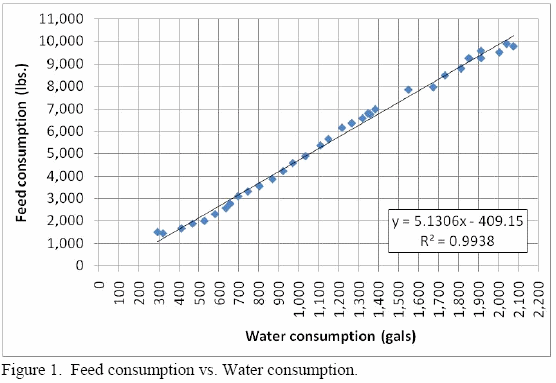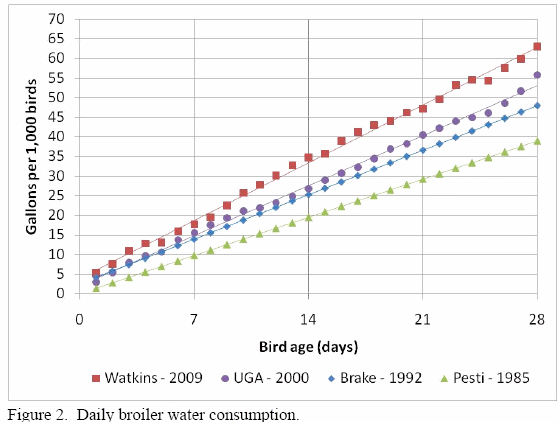Litter Moisture Control
Improved Growth Rates can Make it Difficult to Control Litter Moisture
Published: February 29, 2012
By: Dr. Mike Czarick, Dr. Brian D. Fairchild (The University of Georgia)
In the late 1950´s it took approximately 50 days for a male broiler to reach a weight of 1.7 lbs. By the early 2000´s the same weight could be reached at 21 days of age (Havenstein, et. al, 2003). Today it can be reached in as little as 18 days. One of the many challenges of managing today´s fast growing broilers is maintaining proper litter quality. In general, a fast growing bird consumes feed at a higher rate than a slower growing bird. For instance, from 2001 to 2007 feed consumption of a male broiler over the first three weeks of its life increased by roughly 7%. The good news is that growth rates over the same period of time increased by roughly 12% resulting in significantly improved feed conversions (1.26 vs. 1.31). The challenge for producers is that water consumption is primarily determined by feed consumption. On average for every pound of feed a bird consumes it will drink approximately 0.2 gallons of water. This relationship is fairly consistent from the beginning to the end of a flock (Figure 1). As a result, as growth rates have increased so has the rate at which we are adding to our houses.

In 1985 broilers consumed approximately 30 gallons per 1,000 at 21 days of age. By the year 2000 this increased to 40 gallons. By 2009 broiler water consumption at 21 days of age increased to approximately 50 gallons per 1,000, an increase of nearly 150% (Figure 2).
When we look at cumulative water consumption the magnitude of the change in water consumption becomes even more apparent. In 1985 a 1,000 birds would have consumed 550 gallons of water by 28 days of age. By 2009 cumulative water consumption for birds of the same age nearly doubled to 1,000 gallons. Since between 70% and 80% of the water consumed by the birds ends up in the air and litter in a poultry house this means that today´s broiler growers have to get rid of nearly twice the amount of moisture as they did in 1985 if they want to maintain proper litter conditions.


It is very important that broiler producers keep in mind that since minimum ventilation rates are primarily intended to control house moisture levels, as water consumption rates increase so should their minimum ventilation rates. So whereas 15 years ago operating a few 36" fans on a timer a minute out of five might have proven sufficient to control moisture in a house with two week old birds, today the same timer setting would result in very wet floors due to the simple fact the amount of water the birds are consuming has increased by nearly 50%.
Though sometimes we forget, the broiler we grow today is very different from the one we grew in the past. Management practices will need to be continually examined and modified to insure we meet the needs of the ever changing broiler. In the end if we want to maximize broiler performance, we need to be willing to change our ways of doing things as much as the broilers themselves have changed.
This article was originally published at UGA Cooperative Extension Poultry Housing Tips Vol. 22 no.11, October 2010. Engormix.com thanks the authors for this contribution.
Related topics
Authors:
Join to be able to comment.
Once you join Engormix, you will be able to participate in all content and forums.
* Required information
Would you like to discuss another topic? Create a new post to engage with experts in the community.
Create a post








.jpg&w=3840&q=75)